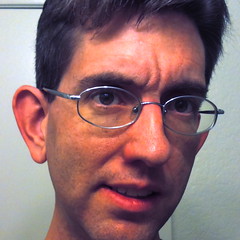
Ken Hayworth
Can we extract a mind from a plastic-embedded brain?
We now have a good working theory of consciousness – the phenomenal self model (Metzinger 2009), and we have a good understanding of the human cognitive architecture (Anderson 2007) within which this self model is implemented. The key components of this cognitive architecture are declarative memory chunks and productions – thought to be implemented as stable attractors in the neural networks of the cortex and basal ganglia. According to neural network theory, such stable attractors are robustly defined by the synaptic connectivity between neurons. In small pieces of tissue such synaptic connectivity is easily preserved using chemical fixation and embedding in plastic, and it should be relatively easy to adapt these protocols into a surgical procedure performed in hospitals to preserve whole human brains. Such plastic embedded brain tissue can be imaged at the nanometer level using new automated techniques (SBFSEM, FIBSEM, Tape-to-SEM), and we can directly extrapolate these techniques to future ones that will enable all the synaptic connections within a human brain to be mapped allowing a fully accurate simulation of the original preserved mind. In short, we have a complete sketch of how mind uploading will work and we have a mandate to implement emergency brain preservation in hospitals for all who desire access to this future technology.
Kenneth Hayworth, a postdoctoral fellow at Harvard University, is the inventor of several technologies for high-throughput volume imaging of neural circuits at the nanometer scale. He received a PhD in Neuroscience from the University of Southern California for research into how the human visual system encodes spatial relations among objects. Hayworth is a vocal advocate for brain preservation and mind uploading, and runs a website (www.brainpreservation.org) calling for the implementation of an Emergency Glutaraldehyde Perfusion procedure in hospitals, and for the development of a Whole Brain Plastic Embedding procedure which can demonstrate perfect ultrastructure preservation across an entire human brain.
